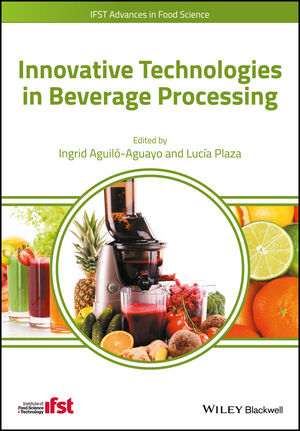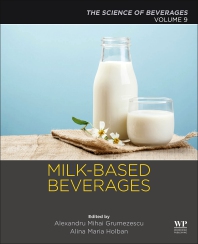Special Report
Artificial intelligence, collaboration efforts assist in new product development research
Beverage-makers prioritize cost advantages, speed to market

Image courtesy of Getty Images
In a new Google feature, the search engine shows a preview of results with an artificial intelligence (AI) overview. The company says that the AI Overviews can “take the work out of searching by providing an AI-generated snapshot,” which contains key information and links for users.
In the beverage world, AI can serve to assist with new product development (NPD) research, also making things easier on users.
Eric Linxwiler, senior vice president TradeBeyond, San Diego, shares that AI can revolutionize NPD in the beverage industry by significantly enhancing efficiency and accuracy.
“AI technologies can analyze vast datasets to identify optimal taste profile and successful ingredient combinations, effectively reducing the need for extensive trial-and-error testing,” he says. “AI allows for the utilization of a significantly broader and more varied dataset — including historical data, social media trends and marketing analysis — to pinpoint optimal taste profiles.”
Linxwiler says that AI also can optimize packaging design by evaluating numerous data points to determine the best materials and designs that “ensure product safety, durability, cost-efficiency during transportations,” along with optimal shelf presentation at the point of sale.
“AI-driven platforms can suggest optimal packaging configurations that balance protection, sustainability and cost, as well as optimal on-shelf presentation,” he explains. “AI is also supporting significantly more precise demand planning, which is critical for products with short lives. This precision minimizes waste, optimizes resource allocation and ensures products are available when and where needed.”
Paul Bradley, senior director of product marketing at Broomfield, Colo.-based TraceGains, feels that there are a range of applications in which beverage-makers can utilize AI.
“In a survey of innovation and R&D teams that we carried out earlier this year, we asked teams to identify the areas of AI most interesting to them, and the top response (53% of respondents) was around consumer and market research,” he shares. “There’s definite interest in solutions that can leverage data from the internet to gain insights into consumer preferences and trends that might not be otherwise obvious.”
AI has the potential to accelerate ingredient and material sourcing by helping NPD teams identify potential solutions to formulation challenges, or to locate qualified suppliers based on unique criteria that a given brand may have.
Bradley notes that AI-assisted sources is another area of interest and one where TraceGains has been conducting research.
“AI has the potential to accelerate ingredient and material sourcing by helping NPD teams identify potential solutions to formulation challenges, or to locate qualified suppliers based on unique criteria that a given brand may have,” he explains.
AI also can be involved in process automation, Bradley adds.
“AI is used to automate, validate and refactor processes and interactions across the supply chain, from alternate sourcing to auditing and risk prevention and alerting,” he says.
As for what the technology can offer innovators, Bradley points to speed to market, which he says has never been more important, “especially as innovation accelerates across the industry.”
“The competition for both consumer interest and retail shelf space is intense, so brands need to be able to move from concept to shelf faster than before,” he explains. “Using AI to zero in on consumer desires, fine-tune formulas and source novel ingredients has the potential to create real advantages for brands seeking that first-mover advantage.”
Another advantage of AI technology is cost advantages and savings that make their way into improved margins, pricing advantages and even the ability to reinvest, Bradley adds.
The most obvious advantage that Linxwiler notes is that it accelerates the new product development cycle. He says this allows companies to bring products to market faster, similar to what Bradley mentioned.
“This speed is crucial in a competitive market where product lifecycles are increasingly shorter and taste preferences evolve more rapidly, making timely product launches essential to gain substantial advantages,” Linxwiler explains. “AI-driven predictive analytics can identify market trends and consumer preferences early, enabling quicker product development by reducing the time required for market research and testing.”
The second advantage he shares is that AI can cut costs associated with NPD by optimizing processes and reducing inefficiencies.
“This cost reduction can level the playing field, enabling smaller companies to compete with larger firms by affording them the resources to innovate effectively,” Linxwiler says. “Additionally, AI-driven automation can reduce labor costs and streamline R&D efforts.”
Lastly, Linxwiler states that AI supports data-driven decision making, which provides beverage innovators with insights derived from extensive data analysis.
“This capability enhances the accuracy of predictions and strategies, leading to more successful product launches and market penetration,” he explains. “Previously, access to such comprehensive information was predominantly available to large companies with substantial budgets. Now, AI is democratizing this advantage, leveling the playing field for smaller companies to compete more effectively.”

Alternative avenues
Other technologies and techniques also are aiding beverage-makers in NPD.
TraceGains’ Bradley has observed a growing focus on effective collaboration.
“The definition of what makes a successful product has gotten more complex in recent years,” he says. “A product needs to connect with consumers, taste great and be attractively packaged, but increasingly, it also needs to be sustainably produced, with a transparent supply chain and accurate, transparent labeling.”
Teams can leverage that technology to create seamless workflows, Bradley states, and avoid getting stuck in traditional operational silos to move faster. He again says that speed real cost savings are key.
TradeBeyond’s Linxwiler expresses similar sentiments.
“One notable strategy is co-creation with consumers, where companies engage their customer base in the product development process through online platforms or contests,” he shares. “By engaging consumers not only during specific co-creation events, but also continuously throughout the year, companies gather valuable insights that refine consumer preferences and directly feed into the new product development process.”
Linxwiler feels that this ongoing interaction not only builds anticipation for new products, but also ensures that the insights collected are deeply embedded into the product lifecycle.
“Additionally, AI-supported tools analyze text and visual feedback in real time, organizing it into actionable insights for marketers planning new products,” he says.
On a related note, Linxwiler notes that collaborations with other brands are becoming more common.
“By partnering with complementary brands, beverage companies can create unique flavor combinations or limited-edition products that attract consumer interest and differentiate their offerings in the market,” he explains. “For instance, a beverage company might partner with a popular snack brand to create a new product line that appeals to both customer bases.”
Linxwiler says that beverage-makers are increasingly utilizing advanced digital platforms to streamline their supply chains and enhance product development.
“These platforms provide real-time visibility and facilitate better collaboration among their suppliers across the value chain,” he shares. “This integrated approach ensures efficient management of resources, leading to faster, more successful product launches.”
Additional impacts
Yet, NPD is much more than the final product on the shelf. Environmental, social and governance (ESG) strategy has become a bigger influence on the process.
TraceGains’ Bradley calls its affect significant.
“Even in the U.S., where regulators have been less aggressive on sustainability, consumers and retailers are pushing for more sustainable products and packaging solutions,” he says. “This is driving the need for greater awareness of the supply chain and a much greater understanding of the total lifecycle impact of products.”
Bradley again states that a good product formulation simply isn’t enough anymore.
“You’ve got to be able to weigh net impacts all the way up the supply chain and all the way down to disposal,” he says. “Fortunately, there are solutions and data sources to help brands do that and it’s an area where we see huge growth in the years to come.”
Bradley feels that ESG is giving manufacturers new avenues to segment and satisfy markets, as well as providing “incremental platforms for competitive differentiation.”
TradeBeyond’s Linxwiler shares thoughts akin to Bradley’s regarding ESG’s impact on NPD.
“Companies are increasingly committing to ensuring their products and processes comply with stringent environmental and social regulations, and doing that necessitates comprehensive documentation of the origins and transformations of all ingredients used,” he says. “Sustainable source of ingredients and transparent supply chains are becoming critical components of new product development.”
Linxwiler states that the market trends are unmistakable — consumers are more aware and concerned about the environmental footprint of their purchases, and companies that can demonstrate responsible sourcing and sustainability practices are more likely to win consumer trust and loyalty.
“For example, companies might use advanced tractability tools to ensure and verify the ethical sourcing of ingredients, providing consumers with transparent information about the product’s journey from farm to table,” he says. “Given the patchwork of so many varying legislations across the world, understanding these regulations, developing compliant products and ensuring proper documentation demands sophisticated digital platforms.
“Multi-enterprise chain solutions like TradeBeyond play a crucial role in managing this added complexity in the new product development process, enabling companies to navigate complex regulatory landscapes effectively,” Linxwiler concludes.
Looking for a reprint of this article?
From high-res PDFs to custom plaques, order your copy today!








